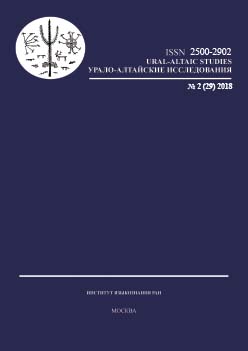Как возникают новые формы отрицания в калмыцком языке
On the origin of new negative forms in Kalmyk
Author(s): Vlada BaranovaSubject(s): Language studies, Morphology
Published by: Институт языкознания Российской академии наук
Keywords: Kalmyk; Mongolic languages; negation; negative affixes; frequency;
Summary/Abstract: This paper addresses the issue of shortened form of negative markers in Kalmyk. Mongolic languages have a very elaborate system of negative markers, partly inherited from the Old / Middle Mongolian negation. The current study is based on the field data from the Ketchenerovsky region, Republic of Kalmykia, as well as on two corpora (Kalmyk National Corpus and the National Corpus of Kalmyk Language). It presents a study of negative markers bišǝ and -šǝ and uga and go respectively. The study shows that there is a distribution of full and constructed version of negative markers. Full forms occur with nouns and in nonverbal predication while affixes are used mainly in verbal sentences. The distribution is also tied to several pragmatic and modal factors, for example, the marker bišǝ is used with future participle ending on -x to express the emphatic form with modal meaning, while the contracted form -šǝ with this participle is the neutral way to express negation.
Journal: Урало-алтайские исследования
- Issue Year: 2018
- Issue No: 02 (29)
- Page Range: 7-17
- Page Count: 11
- Language: Russian

